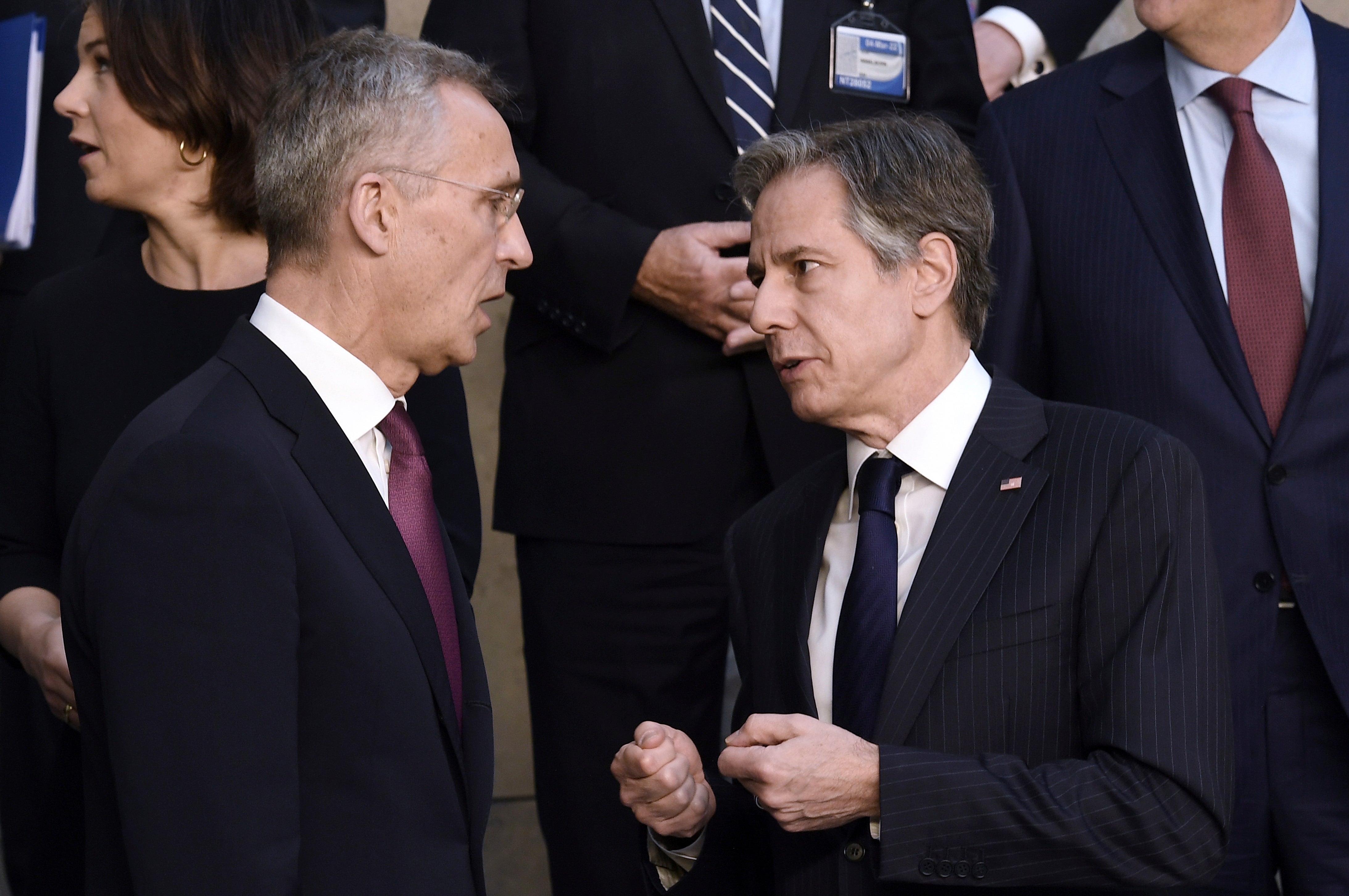NATO rules out policing no-fly zone over war-hit Ukraine
NATO is refusing to police a no-fly zone over Ukraine

Your support helps us to tell the story
From reproductive rights to climate change to Big Tech, The Independent is on the ground when the story is developing. Whether it's investigating the financials of Elon Musk's pro-Trump PAC or producing our latest documentary, 'The A Word', which shines a light on the American women fighting for reproductive rights, we know how important it is to parse out the facts from the messaging.
At such a critical moment in US history, we need reporters on the ground. Your donation allows us to keep sending journalists to speak to both sides of the story.
The Independent is trusted by Americans across the entire political spectrum. And unlike many other quality news outlets, we choose not to lock Americans out of our reporting and analysis with paywalls. We believe quality journalism should be available to everyone, paid for by those who can afford it.
Your support makes all the difference.NATO countries refused on Friday to police a no-fly zone over Ukraine, warning that such a move could provoke widespread war in Europe with nuclear power Russia, the organization’s top civilian official said.
Speaking after chairing a meeting with U.S. Secretary of State Antony Blinken and his counterparts, NATO Secretary-General Jens Stoltenberg acknowledged the suffering of the Ukrainian people, as Russia ramps up its use of heavy firepower, shelling cities and other sites, forcing more than a million people out of the country.
“What is taking place now in Ukraine is horrific. It’s painful and we see human suffering, we see destruction at a scale we haven’t seen in Europe since the Second World War,” he said. But, he added: “We are not going to move into Ukraine, neither on the ground, nor in the Ukrainian airspace.”
Under a collective security guarantee binding NATO’s 30 member countries — Article 5 of its founding treaty — all allies must come to the defense of an ally if it finds itself under attack. Any shooting down of a NATO warplane by Russia could trigger that clause.
“The only way to implement a no-fly zone is to send NATO fighter planes into Ukrainian airspace, and then impose that no-fly zone by shooting down Russian planes,” Stoltenberg said. He said allies believe that “if we did that, we would end up with something that could end in a full-fledged war in Europe.”
Ukrainian President Volodymyr Zelenskyy has appealed for the West to enforce a no-fly zone over his country, most recently after a fire overnight at one of Ukraine’s nuclear plants, the largest in Europe.
But, Stoltenberg said, “we are not part of this conflict, and we have a responsibility to ensure that it does not escalate and spread beyond Ukraine, because that would be even more devastating and more dangerous.”
NATO members and officials are alarmed at Russian President Vladimir Putin’s threat to use nuclear weapons should one of their number get involved in his war on Ukraine. NATO has no weapons itself, but the United States, Britain and France are nuclear powers, like Russia.
NATO has mobilized thousands of troops backed by aircraft, tanks and heavy equipment and deployed them to countries on its eastern flank near Ukraine and Russia, such as Estonia, Latvia, Lithuania, Poland and Romania, which are nervous about Putin’s intentions for their future.
At a second round of talks between Ukrainian and Russian delegations Thursday, Putin warned Ukraine that it must quickly accept the Kremlin’s demand for its “demilitarization” and declare itself a neutral country, thereby renouncing any bid to join NATO.
NATO insists that its door remains open to any European country that wants to join and can fulfill the obligations of membership. Stoltenberg said that the world's biggest security organization will also step up cooperation with already close allies Finland and Sweden.
Blinken also held talks in Brussels Friday with members of the Group of Seven major powers and European Union countries.